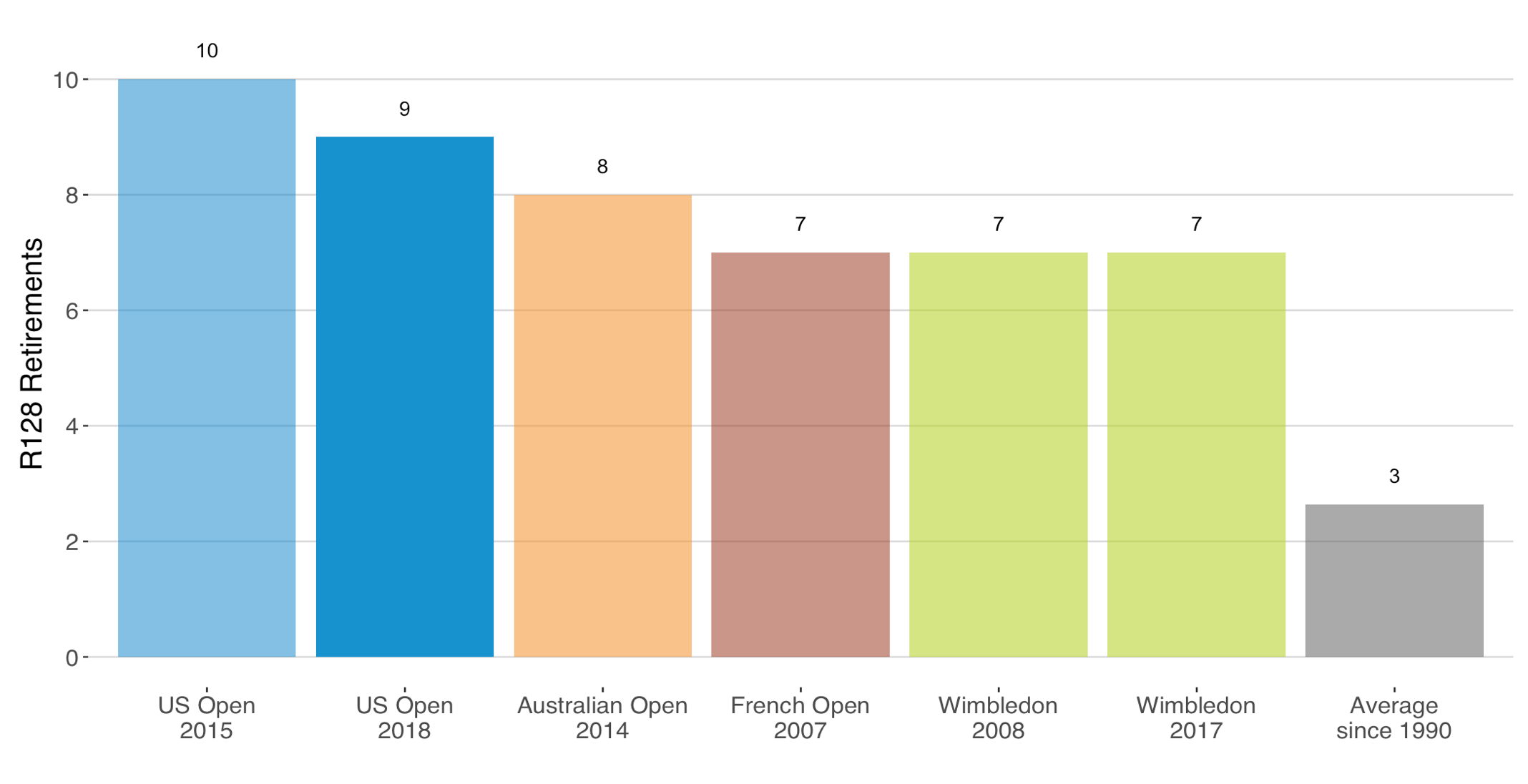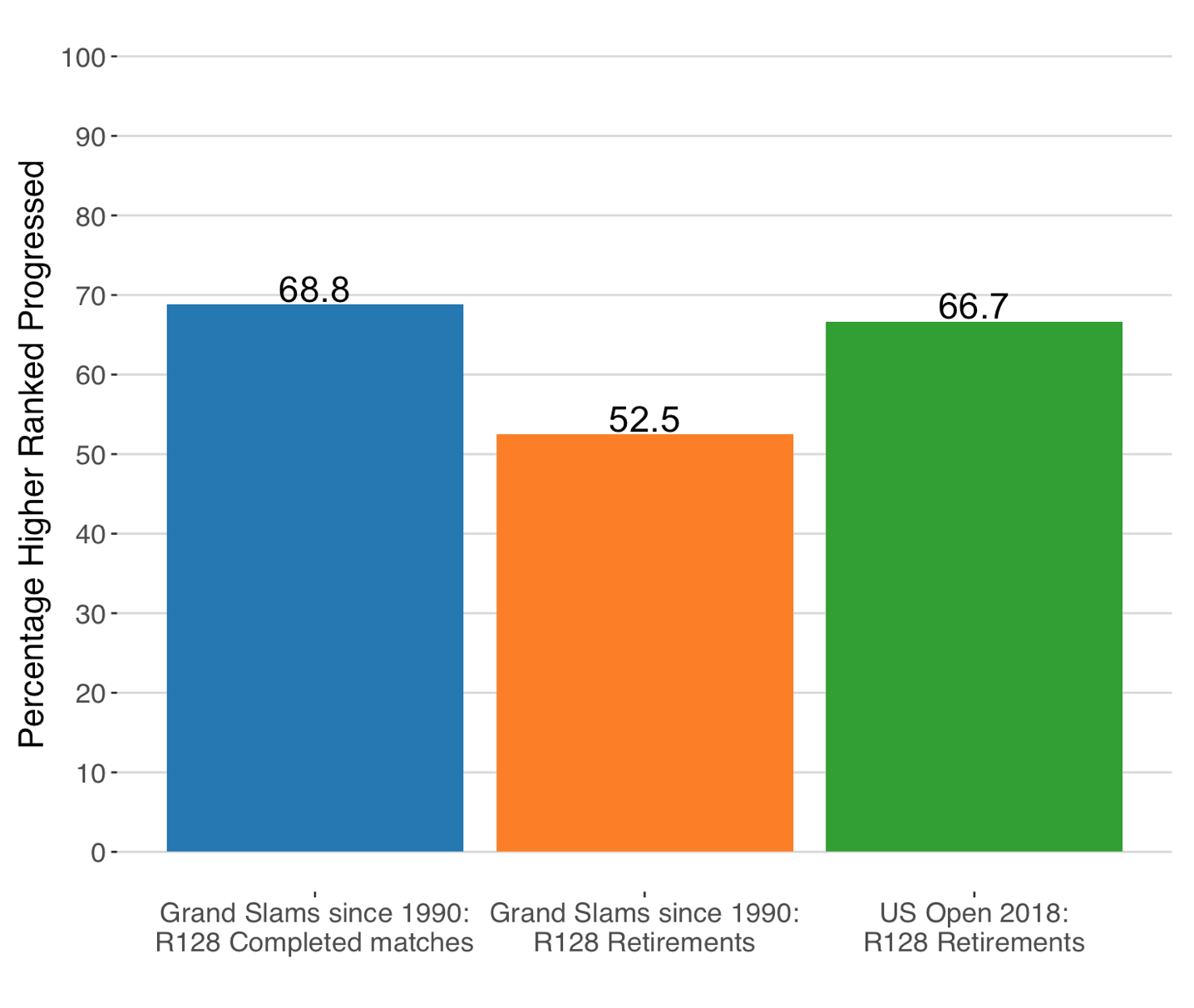2015 US Open Still The Most Brutal in Tennis History
After two rounds in extreme heat conditions, the 2018 US Open has seen 12 men’s singles matches end in retirement. Is this a historic high for the number of early retirements at a slam? And how do high retirement counts impact the progress of the draw?
Weather has been much of the talk during the first week of the 2018 US Open. High humidity and temperatures well into the 90s Fahrenheit have made for wet-bulb-busting conditions. The temperatures have been so brutal that tournament officials introduces an extreme heat rule for men for the first time in its history.
Even with the respite afforded by the heat rule, many of the men haven’t been able to last through a best of 5 match in the sweltering heat. A total of 9 men retired (walkovers excluded) in the first round alone; with 3 more retirements in the recently completed second round.
Has any Grand Slam had this many retirements so early in the event?
The Open Era stats at Grand Slams show that, prior to this year’s US Open, the highest number of first round retirements happened at the 2015 US Open, where another blistering New York summer resulted in 10 retirements in the first round. The next highest was at the infamously hot 2014 Australian Open which had 8 first-round retirements. So the 9 R128 retirements at the 2018 US Open makes it the new second highest all-time.
| Year | Tournament | R128 Retirements |
|---|---|---|
| 2015 | US Open | 10 |
| 2014 | Australian Open | 8 |
| 2007 | French Open | 7 |
| 2008 | Wimbledon | 7 |
| 2017 | Wimbledon | 7 |
| 1998 | US Open | 6 |
| 2002 | US Open | 6 |
| 2011 | US Open | 6 |
| 2014 | US Open | 6 |
| 1993 | US Open | 5 |
Some notable points about the revised top 10 first-round retirement counts:
- 6 of the 10 have happened at the US Open
- 9 of the 10 occurred in the 2000s (insert your climate change conclusion here…)
And to give some more context the these counts we can contrast them with the average retirements in the R128 of slams since 1990. That average has been just 3, making the 9 at this year’s US Open 3 times greater than the historical slam average.

Tennis commentary sometimes suggests that lower-ranked players are more vulnerable to retirement. The idea being that the player with the outside chance at the win might be less motivated to persevered in gruelling conditions.
Is there any evidence to back this idea up?
Since the 1990s, nearly 70% of completed matches in the first round have been won by the higher ranked player. In retirements, however, that rate is just 53%, suggesting a nearly even contest for both players, regardless of rank. This goes against the ‘giving up underdog’ theory.

At this year’s US Open, the frequency of lower ranked retirements (67%) has been more consistent with the overall lose rate of lower-ranked players in the first rounds of slams, though with only a sample of 9 we can’t really say that this is different from the historical pattern. But we can say that, with 2 of 3 higher ranked players getting gifted a second round spot owing to retirement, the men’s ‘draw has not opened up as much as it very well could have.

